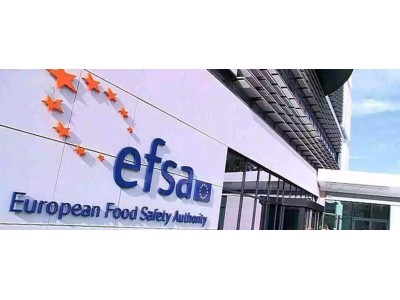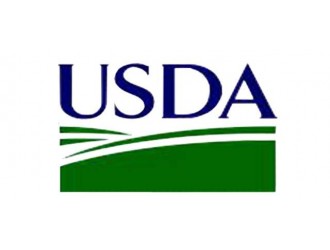гҖҖгҖҖ2022е№?жң?1ж—ҘиҮі2022е№?жң?ж—ҘпјҢ16дёӘ欧зӣ?欧жҙІз»ҸжөҺеҢәеӣҪ家е’ҢиӢұеӣҪжҠҘе‘ҠдәҶй«ҳиҮҙз—…жҖ§зҰҪжөҒж„ҹпјҲHPAIпјүз–«жғ…зҡ„жҡҙеҸ‘гҖӮиҮӘдёҠж¬ЎжҠҘе‘Ҡд»ҘжқҘпјҢдёӯеӣҪжҠҘе‘ҠдәҶ2дҫӢз”ІеһӢH5N6гҖ?дҫӢз”ІеһӢH9N2е’?дҫӢз”ІеһӢH10N3з—…жҜ’ж„ҹжҹ“зҡ„дәәзұ»з—…дҫӢгҖӮеңЁж¬§зӣҹ/欧жҙІз»ҸжөҺеҢәпјҢдёҖиҲ¬дәәзҫӨзҡ„ж„ҹжҹ“йЈҺйҷ©иў«иҜ„дј°дёәдҪҺпјҢиҒҢдёҡжҡҙйңІдәәзҫӨзҡ„ж„ҹжҹ“йЈҺйҷ©дёәдёӯдҪҺгҖӮйғЁеҲҶеҺҹж–ҮжҠҘйҒ“еҰӮдёӢпјҡ
гҖҖгҖҖThe 2021ЁC2022 highly pathogenic avian influenza (HPAI) epidemic season is the largest HPAI epidemic so far observed in Europe, with a total of 2,467 outbreaks in poultry, 47.7 million birds culled in the affected establishments, 187 outbreaks in captive birds, and 3,573 HPAI virus detections in wild birds with an unprecedent geographical extent reaching from Svalbard islands to South Portugal and Ukraine, affecting 37 European countries. Between 11 June and 9 September 2022, 788 HPAI virus detections were reported in 16 European countries in poultry (56), captive (22) and wild birds (710). Several co
lony-breeding seabird species exhibited widespread and massive mortality from HPAI A(H5N1) virus along the northwest coast of Europe. This resulted in an unprecedentedly high level of HPAI virus detections in wild birds between June and August 2022 and represents an o
ngoing risk of infection for domestic birds. HPAI outbreaks were still observed in poultry from June to September with five-fold more infected premises than observed during the same period in 2021 and mostly distributed along the Atlantic coast. Respo
nse options to this new epidemiological situation include the definition and rapid implementation of suitable and sustainable HPAI mitigation strategies such as appropriate biosecurity measures and surveillance strategies for early detection in the different poultry production systems. The viruses currently circulating in Europe belong to clade 2.3.4.4b with seven genotypes, three of which identified for the first time during this time period, being detected during summer. HPAI A(H5) viruses were also detected in wild mammal species in Europe and North America and showed genetic markers of adaptation to replication in mammals. Since the last report, two A(H5N6), two A(H9N2) and one A(H10N3) human infections were reported in China. The risk of infection is assessed as low for the general population in the EU/EEA, and low to medium for occupatio
nally exposed people.
гҖҖгҖҖ
жң¬ж–Үз”ұйЈҹе“ҒдјҷдјҙзҪ‘йЈҹе“Ғиө„и®Ҝдёӯеҝғзј–иҫ‘пјҢдҫӣзҪ‘еҸӢеҸӮиҖғпјҢжңүд»»дҪ•з–‘й—®пјҢиҜ·иҒ”зі»news@www.sqrdapp.comгҖҒь/span>











 ең°еҢәпјҷь/font>
ең°еҢәпјҷь/font>

 欧зӣҹиҜ„дј°иҪ¬еҹәеӣ зҺүзұіMO
欧зӣҹиҜ„дј°иҪ¬еҹәеӣ зҺүзұіMO
 欧зӣҹиҜ„дј°дёҖз§ҚйәҰиҠҪзі–ж·Җ
欧зӣҹиҜ„дј°дёҖз§ҚйәҰиҠҪзі–ж·Җ зҫҺеӣҪжӢҹж’Өй”ҖиӢҘе№ІиӮүзұ»еҸүь/a>
зҫҺеӣҪжӢҹж’Өй”ҖиӢҘе№ІиӮүзұ»еҸүь/a> йІҒе…¬зҪ‘е®үеӨ 37060202000128еҸ¶ь/a>
йІҒе…¬зҪ‘е®үеӨ 37060202000128еҸ¶ь/a>



